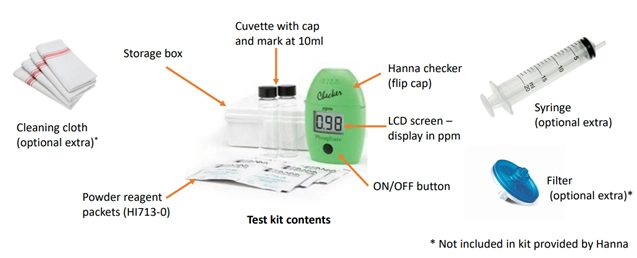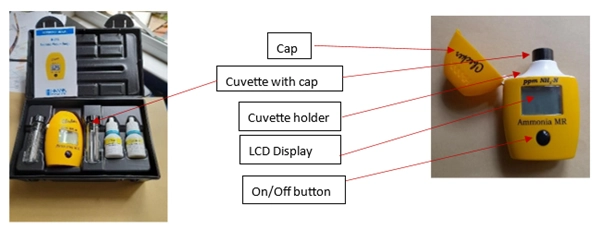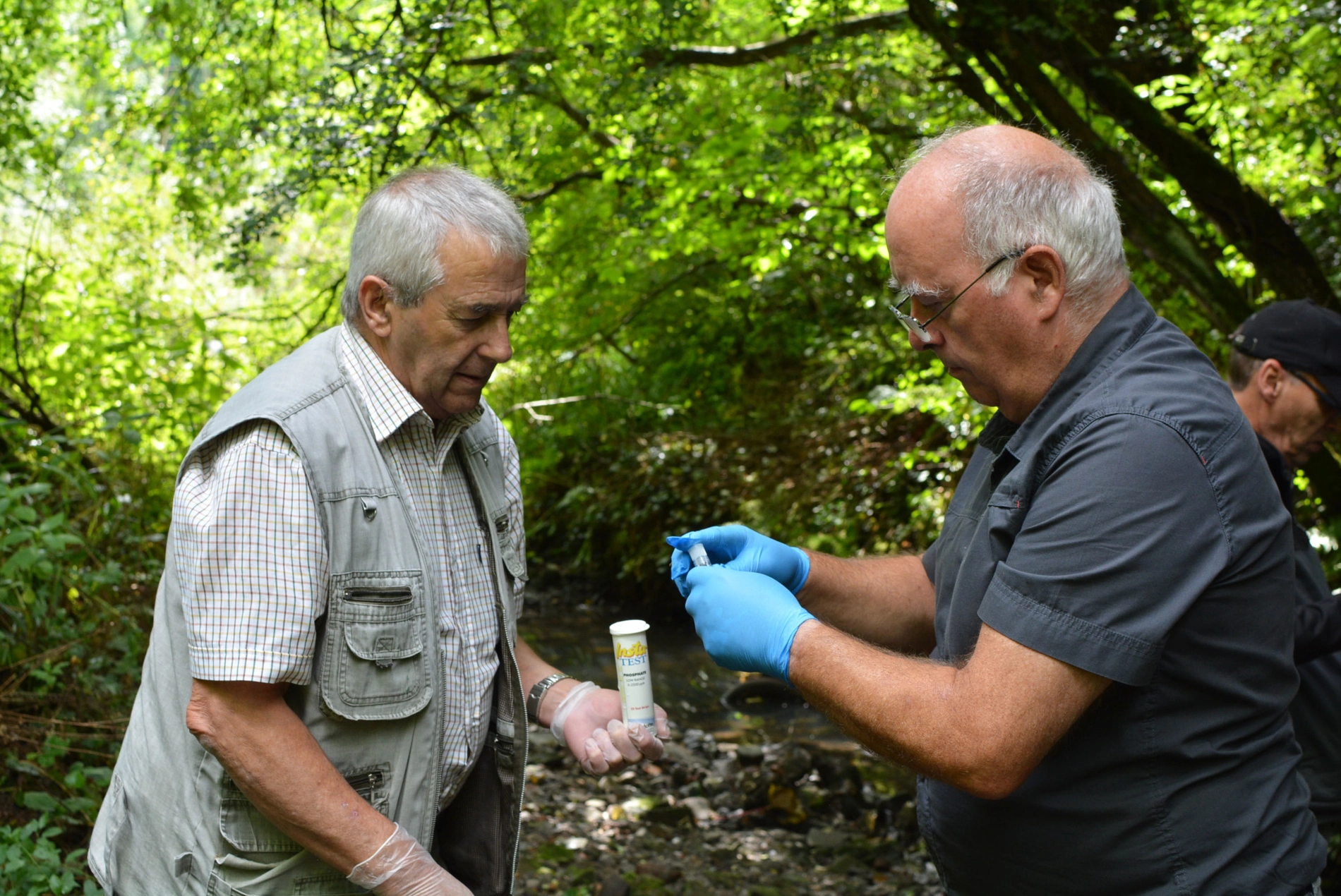Water Quality
Citizen science for water quality is widespread because there are many accessible tests and simple protocols that communities can implement to actively participate in environmental monitoring. MRT-trained volunteers use test strips to monitor ammonia, phosphate, and nitrate.
Our volunteers are trained as citizen scientists to monitor the water quality of their local rivers. They are given kits to test the water for Nitrates, Phosphates, Ammonia, turbidity and temperature.
Volunteers collect water samples from a sub-catchment to use Hanna Checkers to analyse the ammonia and phosphate levels, to gather a snapshot view of the water quality across the sub-catchment.

Water quality test strips:
The water quality testing only requires a small water sample and can be carried out throughout the year.
Please keep the test strips dry and read the instructions carefully, as the company from which we obtain them occasionally updates its methods for testing phosphate, nitrate, and ammonia. Please dispose of the test strips responsibly.
Uploading Data
Please upload any data you have collected when using test strips for ammonia, phosphate, and nitrate, as well as turbidity, temperature and pollution.

Hanna Checkers
Mersey RT uses Hanna Checkers as a more accurate way of monitoring water quality for phosphate and ammonia. Mersey RT uses Hanna checkers when investigating an area of interest this may be where we have a series of projects or an area river guardians would like to investigate further to identify potential sources of point pollution.

Care for your kit
After each sampling session, rinse your Hanna cuvettes and the electrodes on the pH tester twice in river water and once in distilled water. Avoid using detergents or soap to clean, as this may compromise your subsequent readings.


Tips for using the Hanna checkers
- If the sample contains lots of debris or is very turbid, filter it before analysis
- If you notice bubbles in the cuvette, gently swirl or tap it to remove them
- Always make sure the cuvette is clean and dry before placing it nto the checker: wipe off fingerprints with a cloth
- If any error codes appear, such as low battery(“bAt”), check the instruction booklet provided for guidance on what to do
- In cold weather, the powder reagent may take slightly longer to dissolve, so use a separate cuvette for the blank and reacted samples (C1 and C2) to avoid time-out
Water Blitzes
Water Blitzes are an intensive, hands-on survey method that provide a wide-scale snapshot of catchment health. Sites are strategically chosen to collect data from multiple tributaries, allowing us to monitor the biology and chemistry of rivers across the Mersey catchment—all in a single day, thanks to our incredible volunteers!
Why Take Part in a Water Blitz?
The Water Blitz approach brings together citizen scientists, schools, colleges, and community groups to make a real difference for local waterways. By sampling in small teams across multiple sites simultaneously, we can:
-
Capture a snapshot of water quality across a catchment
-
Identify issues affecting river health, such as pollution or habitat degradation
-
Combine local knowledge with scientific data for a richer understanding of the rivers
As a volunteer, you’ll be actively helping to protect the rivers and streams you love, while gaining hands-on experience in environmental monitoring and STEM learning.
How a Water Blitz Works
Participants:
-
Take water samples from multiple sites along rivers and tributaries
-
Measure key water quality indicators such as pH, conductivity, temperature, phosphate, and ammonia
-
Identify river wildlife, including macroinvertebrates, using microscopes or field guides
-
Record and map findings, contributing to a larger citizen-science dataset
The Results
Water Blitzes provide valuable insights into river health and have helped highlight:
-
Variations in water chemistry across tributaries, including changes in pH, conductivity, and nutrient levels
-
Areas of concern where pollution or habitat degradation may be impacting biodiversity
-
Biodiversity hotspots, revealing locations with a rich variety of aquatic life
-
Long-term trends, helping track improvements or declines in river quality over time
The data collected informs our river restoration projects and helps guide future conservation efforts, making a tangible difference for the Mersey catchment.
Join a Water Blitz and become a citizen scientist—help us protect and restore our rivers!
Our Results
Explore our Water Blitz results from Poynton Brook, Whittle Brook, and the Bollin catchment. More results will be added over time.



